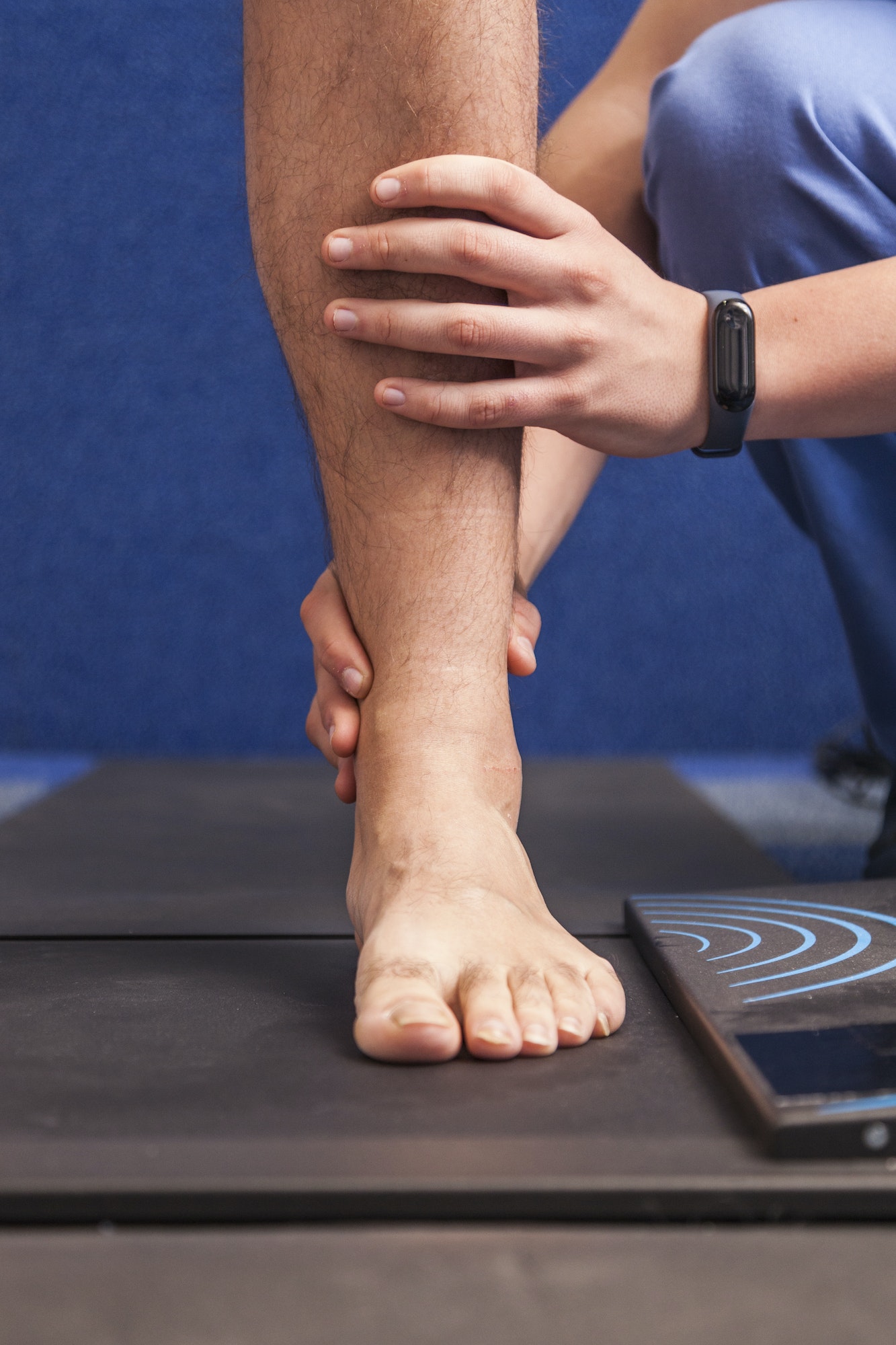Table of Contents
Our Foot Doctors Can Help with Heel Pain and Plantar Fasciitis
Heel pain affecting the bottom of the heel is usually caused by inflammation of the plantar fascia, a condition called plantar fasciitis. Chronic inflammation of the plantar fascia may cause bone spurs on the bottom of the heel. Bone spurs are a bony reaction from excessive pulling of the plantar fascia. Bone spurs typically do not hurt unless they are fractured. Other causes of heel pain may include stress fracture, tendonitis, arthritis, cysts, or referred nerve pain. A doctor at Weil Foot & Ankle can help determine the underlying source of your heel pain and guide towards the appropriate treatment options.
What is Plantar Fasciitis?
What is Haglund’s deformity?
What Are The Causes of Plantar Fasciitis?
What Are The Signs And Symptoms of Plantar Fasciitis?
The symptoms of plantar fasciitis are:
- Pain on the bottom of the heel
- Pain that is usually worse with the first few steps in the morning
- Pain that worsens after periods of activity
- Pain that gradually increases and worsens with time and activity
- Pain aggravates with barefoot walking, or walking on flat surfaces
People with plantar fasciitis most often describe worsening pain when they take the first steps in the morning or periods of rest after activity. As the plantar fascia stretches with walking throughout the day, the pain may improve.
What Are The Risk Factors of Plantar Fasciitis?
There are a number of factors which may put you at a higher risk of plantar fasciitis.
These include:
- Foot shape: Irregularities in the shape of your foot, such as high arches, can cause extra stress and strain on the plantar fascia. The shape of your foot plays a big role in the biomechanics of your foot in gait.
- Too much time on your feet: Whether it’s jogging, walking long distances, or working at a job that requires a lot of time spent on your feet, overuse is one of the leading causes of plantar fasciitis.
- Sedentary lifestyle: Overuse can contribute to injuries, but so can underuse. If you live an inactive lifestyle, there is a risk of your plantar fascia becoming weaker and less flexible, leading to increased risks of injury when stress is applied.
- Obesity: The plantar fascia experiences more strain when it has to accommodate more weight. Being overweight or obese poses higher risks of arch collapse which ultimately puts more stress on the plantar fascia.
How is Plantar Fasciitis Diagnosed?
What Are Possible Treatments For Plantar Fasciitis?
Non-Surgical Treatment
Treatment of plantar fasciitis begins with first-line strategies that support, stretch and strengthen the foot and lower extremity:
- Stretching exercises: Exercises that stretch out the calf muscles can help ease pain and reduce stress on the plantar fascia.
- Avoid barefoot walking: When you walk barefoot or use non-supportive slippers or shoes you place undue strain and stress on your plantar fascia resulting in injury.
- Ice: Icing your heel for 10 minutes, several times a day helps reduce inflammation and pain. Place a thin towel between the ice and your heel; do not apply ice directly to the skin as this may cause a freeze burn.
- Limit activities: Reduce the amount of extended physical activities to give your heel some rest.
- Shoe modifications: Wearing supportive shoes that have good arch support and a slightly raised heel reduces stress on the plantar fascia.
- Medications: Oral non-steroidal anti-inflammatory drugs (NSAIDs), such as ibuprofen, are recommended to reduce pain and inflammation. (Remember, Acetaminophen is a pain reliever but it is NOT an anti-inflammatory.)
If your pain persists after several weeks, it is advised to seek medical evaluation by a Weil Foot and Ankle physician, who will discuss further treatment options with you:
- Padding and strapping: Placing pads on the foot or in the shoe softens the impact of walking. Strapping helps support the foot and reduce strain on the fascia.
- Orthotic devices: Custom orthotic devices that fit into your shoe support your arches and help correct underlying structural abnormalities that often cause plantar fasciitis.
- Injection therapy: In some cases, corticosteroid injections and OrthoBiologics are used to help reduce the inflammation and relieve pain.
- Removable walking cast: A removable walking cast may be used to immobilize your foot for a few weeks to allow it to rest and heal.
- Night splint: Wearing a night splint allows you to maintain an extended stretch of the plantar fascia while sleeping. This will help reduce the morning pain experienced.
- Physical therapy: Exercises and other physical therapy measures may be used to help provide relief.
When Is Surgery Needed for Heel Pain?
Long-Term Care for Heel Pain
Are There Preventative Steps To Avoid Plantar Fasciitis?
Wearing proper shoes and custom orthotics that provide proper arch support can help you avoid plantar fasciitis and other foot injuries. You should avoid over-training or “playing through the pain” if you begin to experience heel pain during physical activity. Avoid walking barefoot and always wear supportive shoes. Stretching is very important when it comes to maintaining plantar fascia health and flexibility. Your podiatrist can demonstrate stretches for you and may recommend physical therapy for more detailed training.
What Are The Risks If Plantar Fasciitis Is Left Untreated?

Meet Weil Foot & Ankle Institute
By: Weil Foot & Ankle Institute, Published: May 20th, 2022
Review By: Lowell Weil Jr., DPM – Jan 19th, 2023


